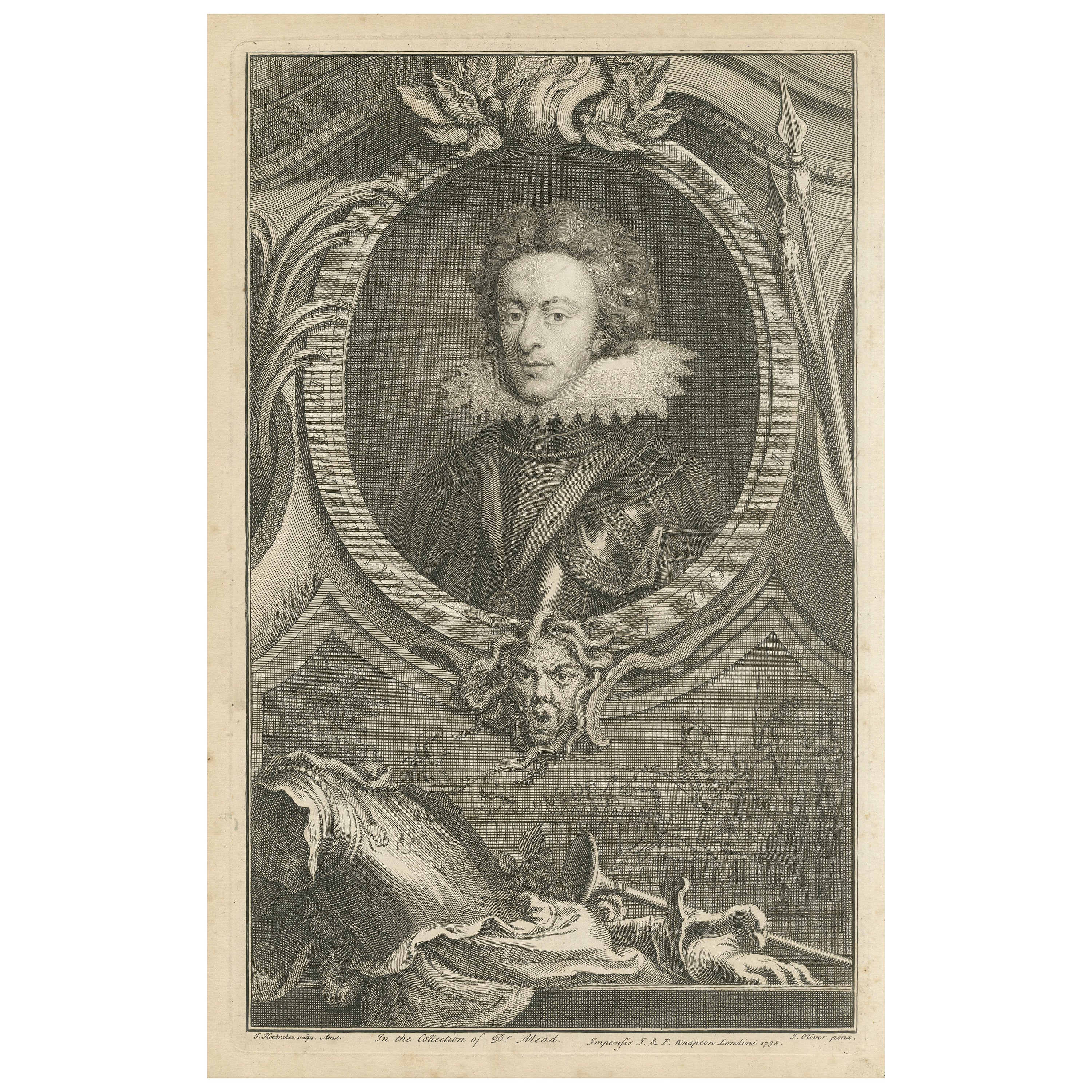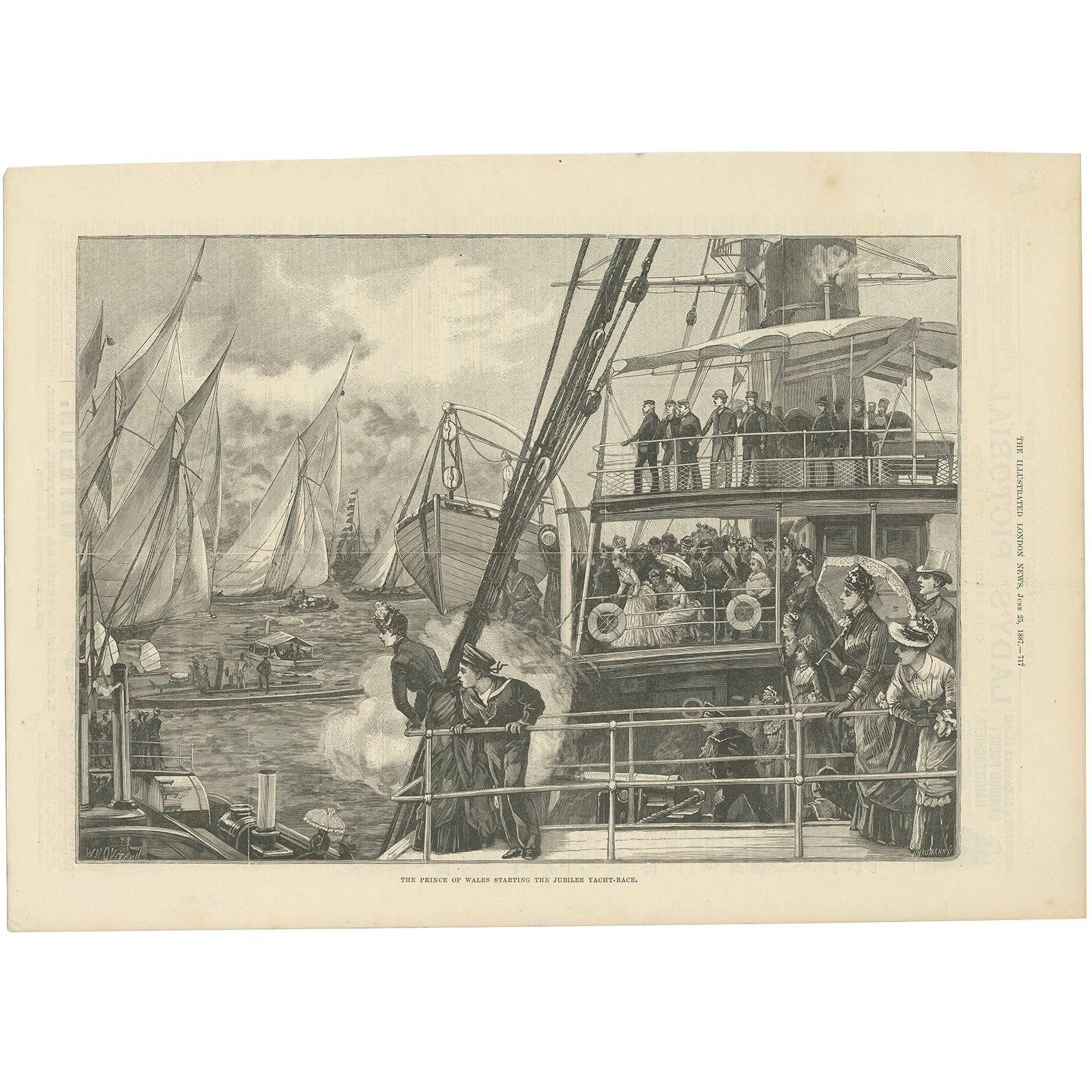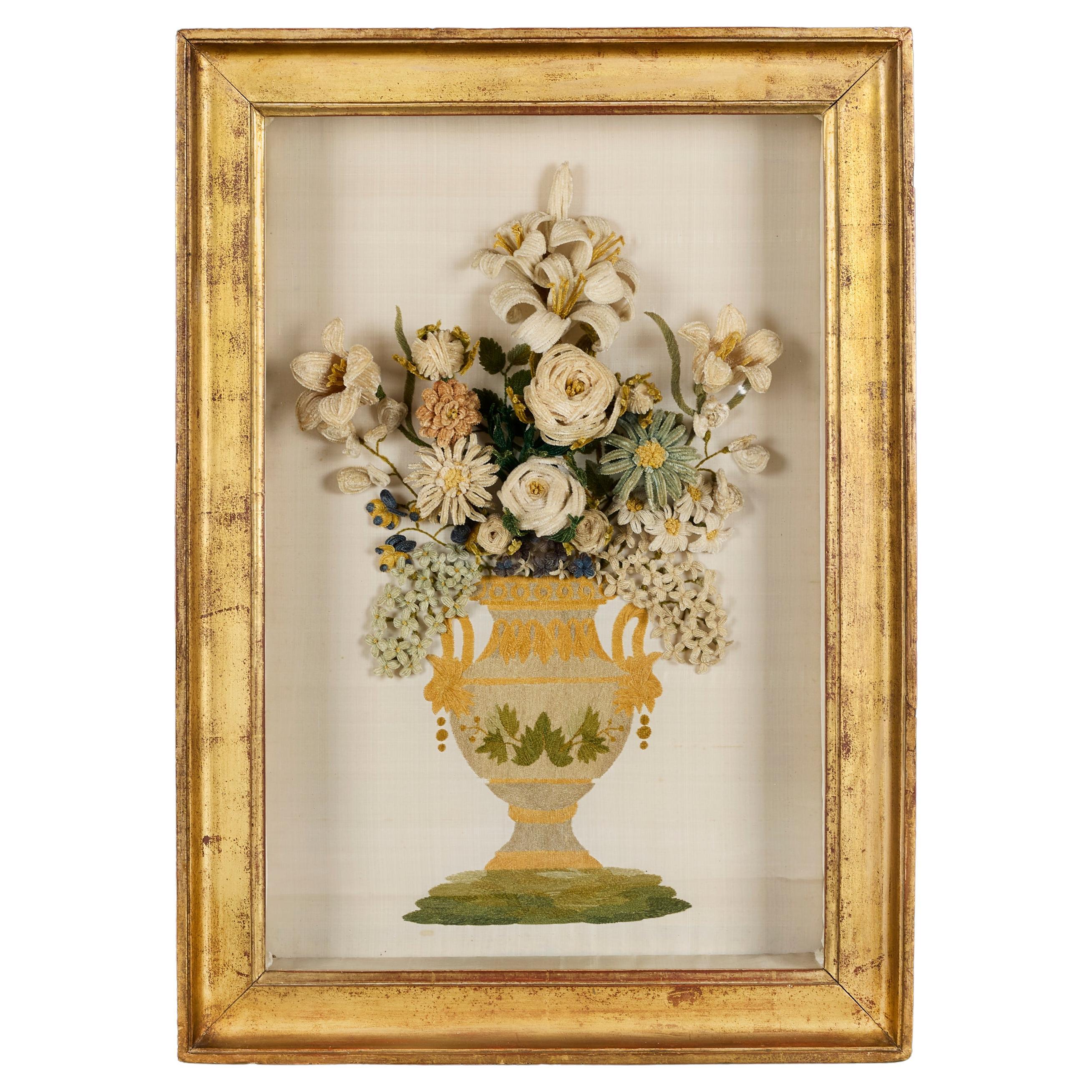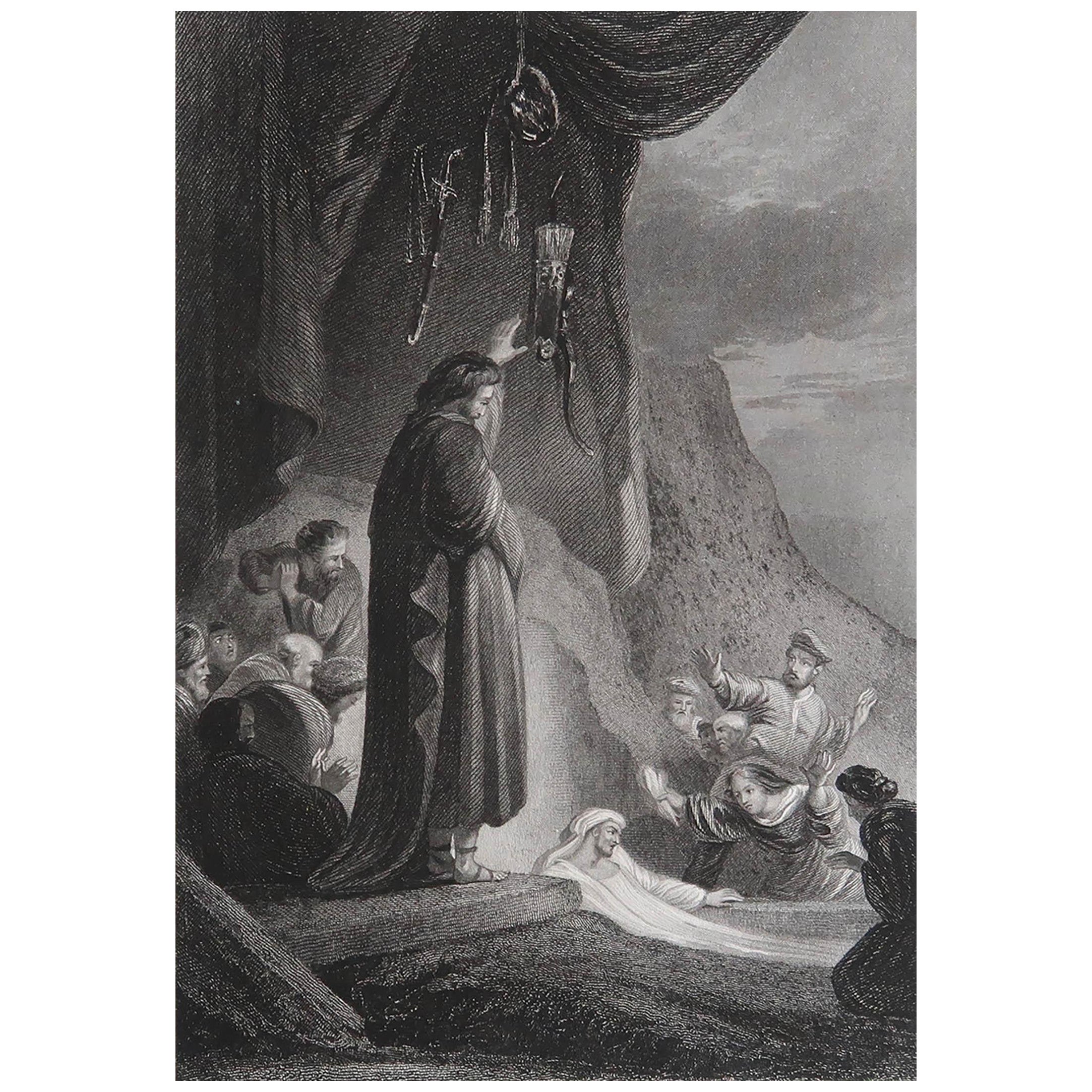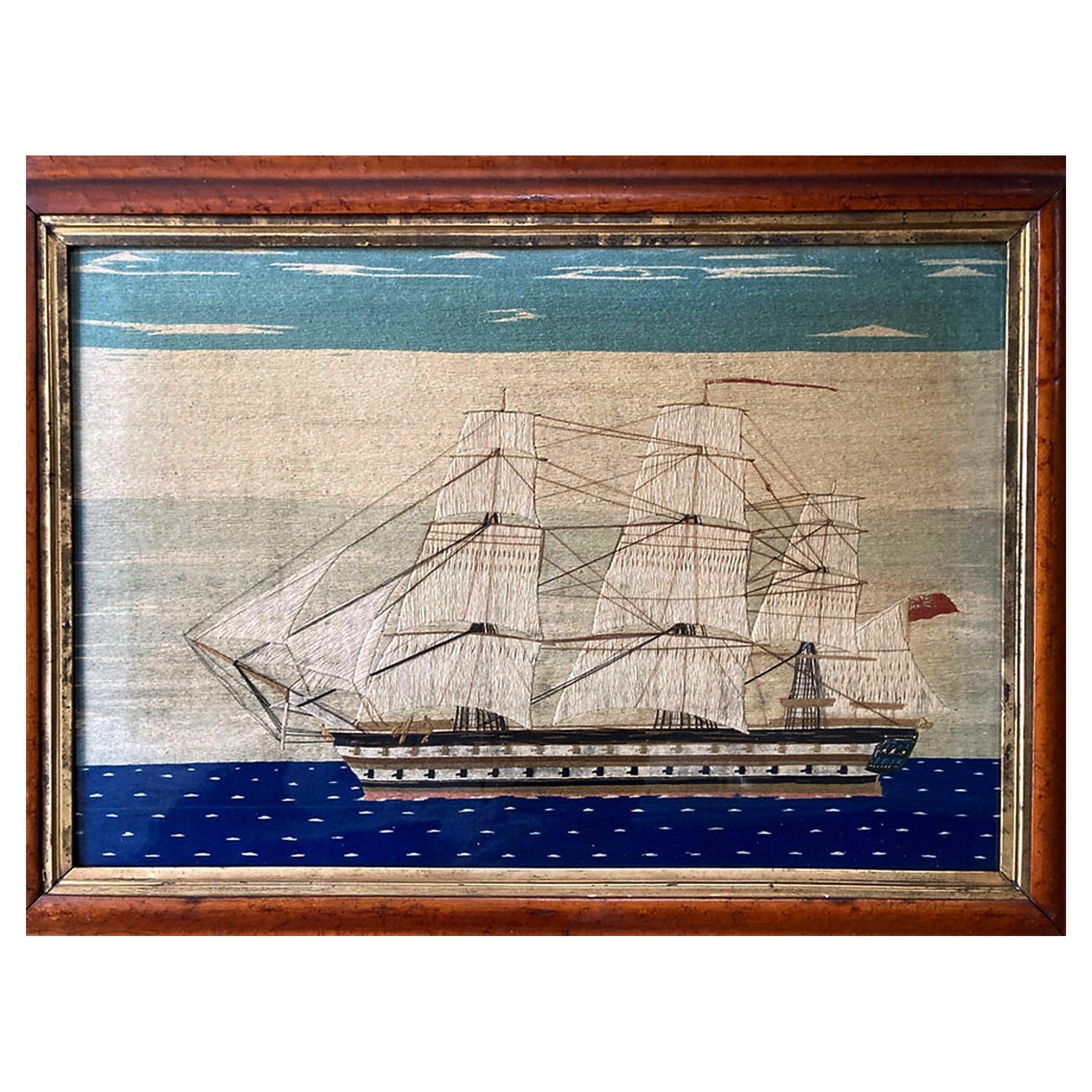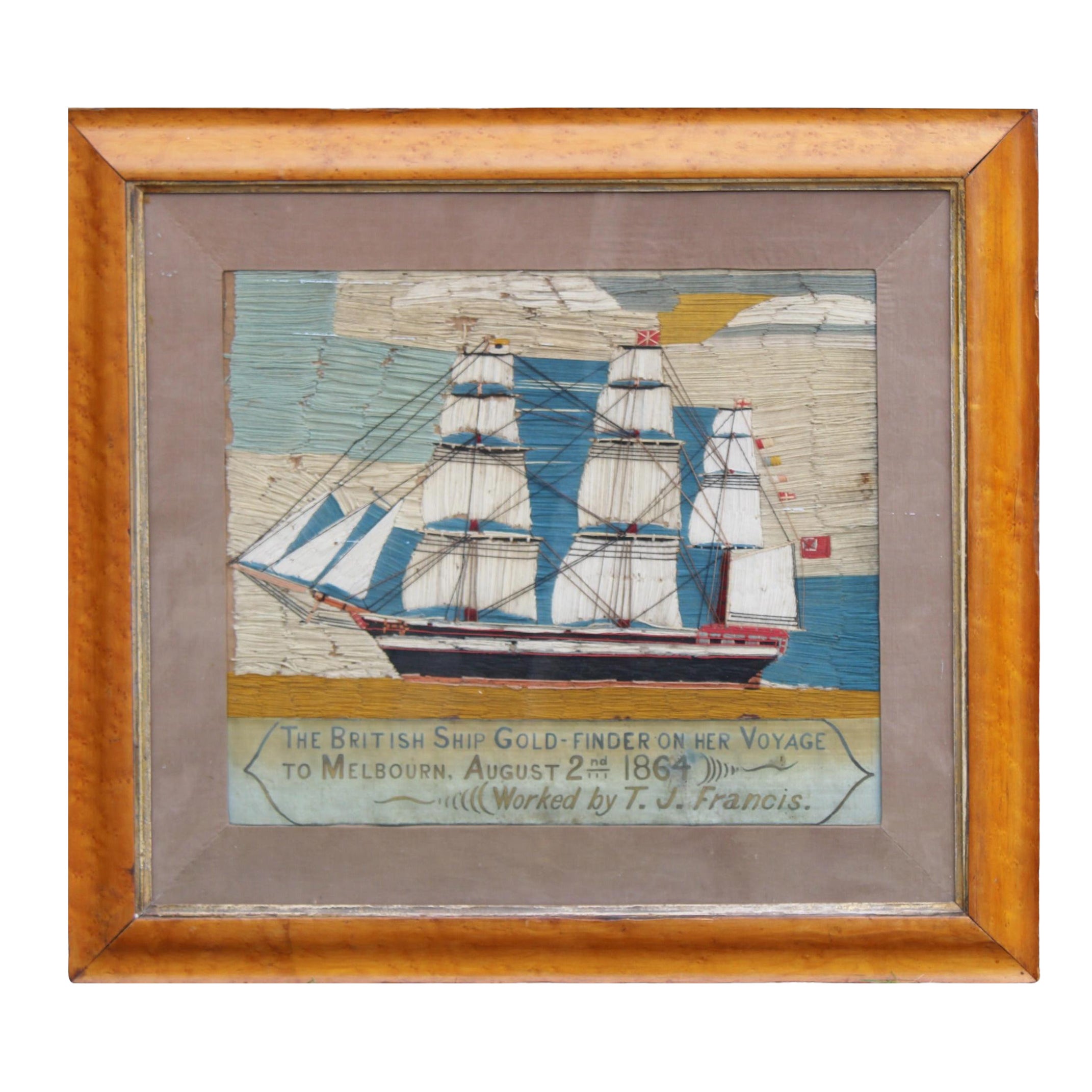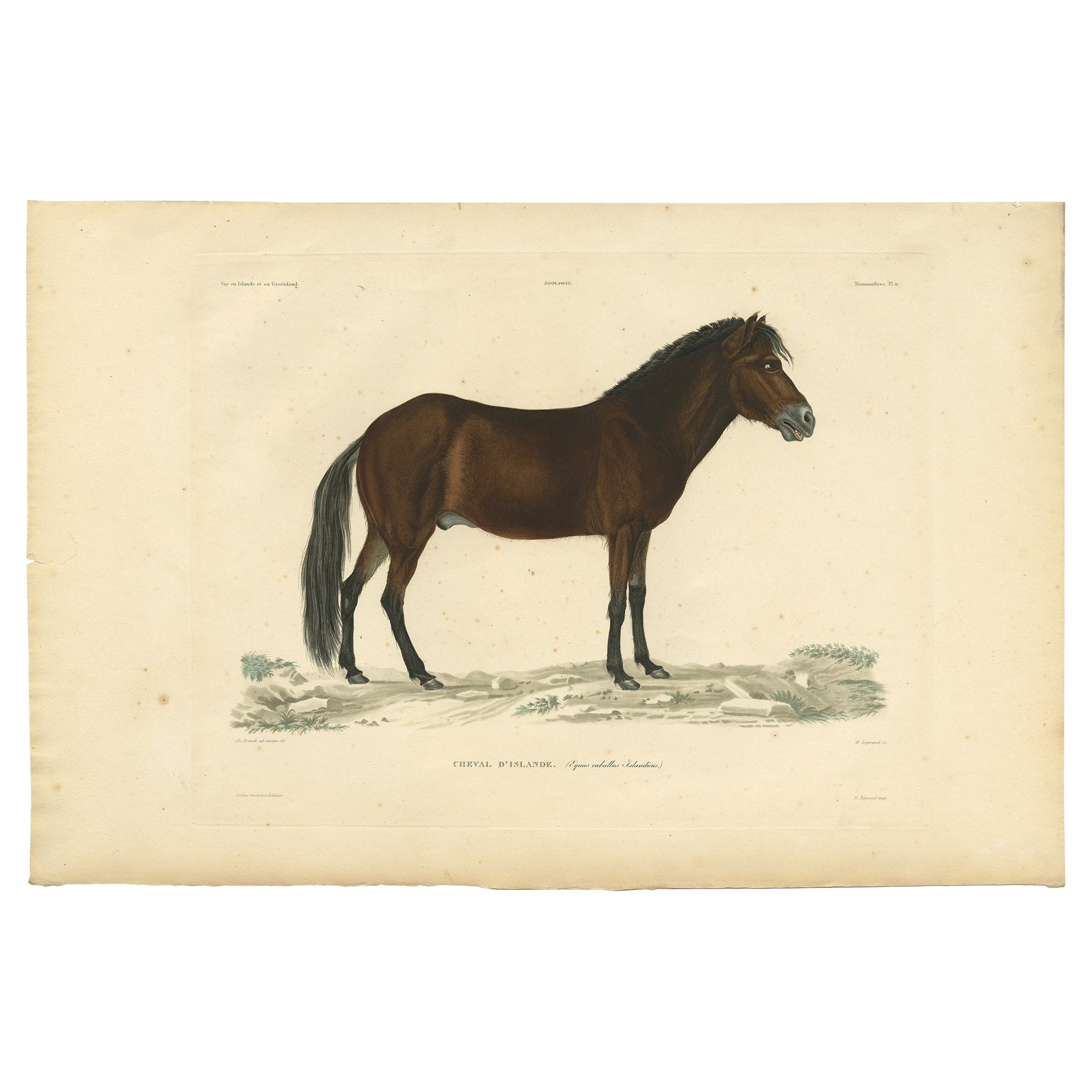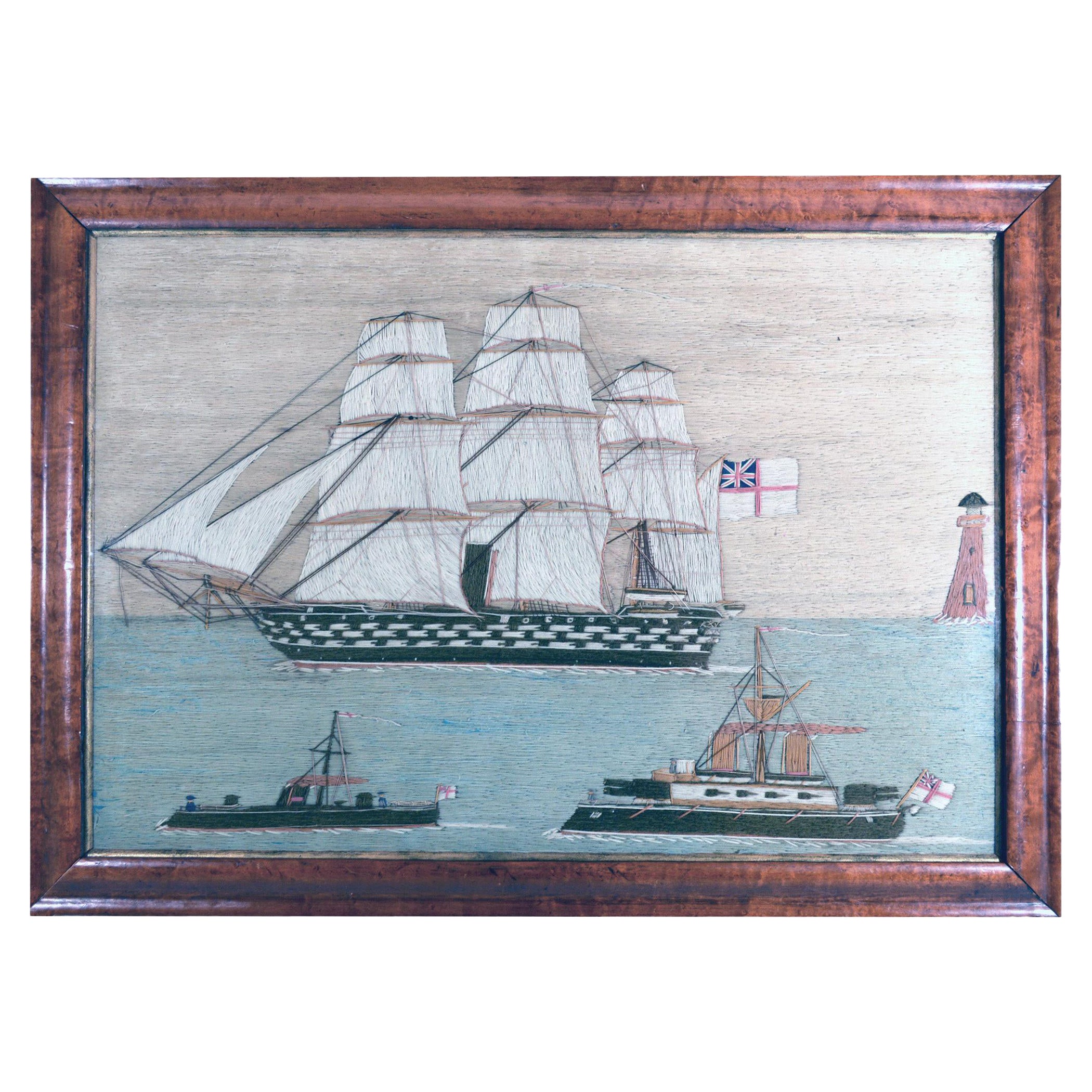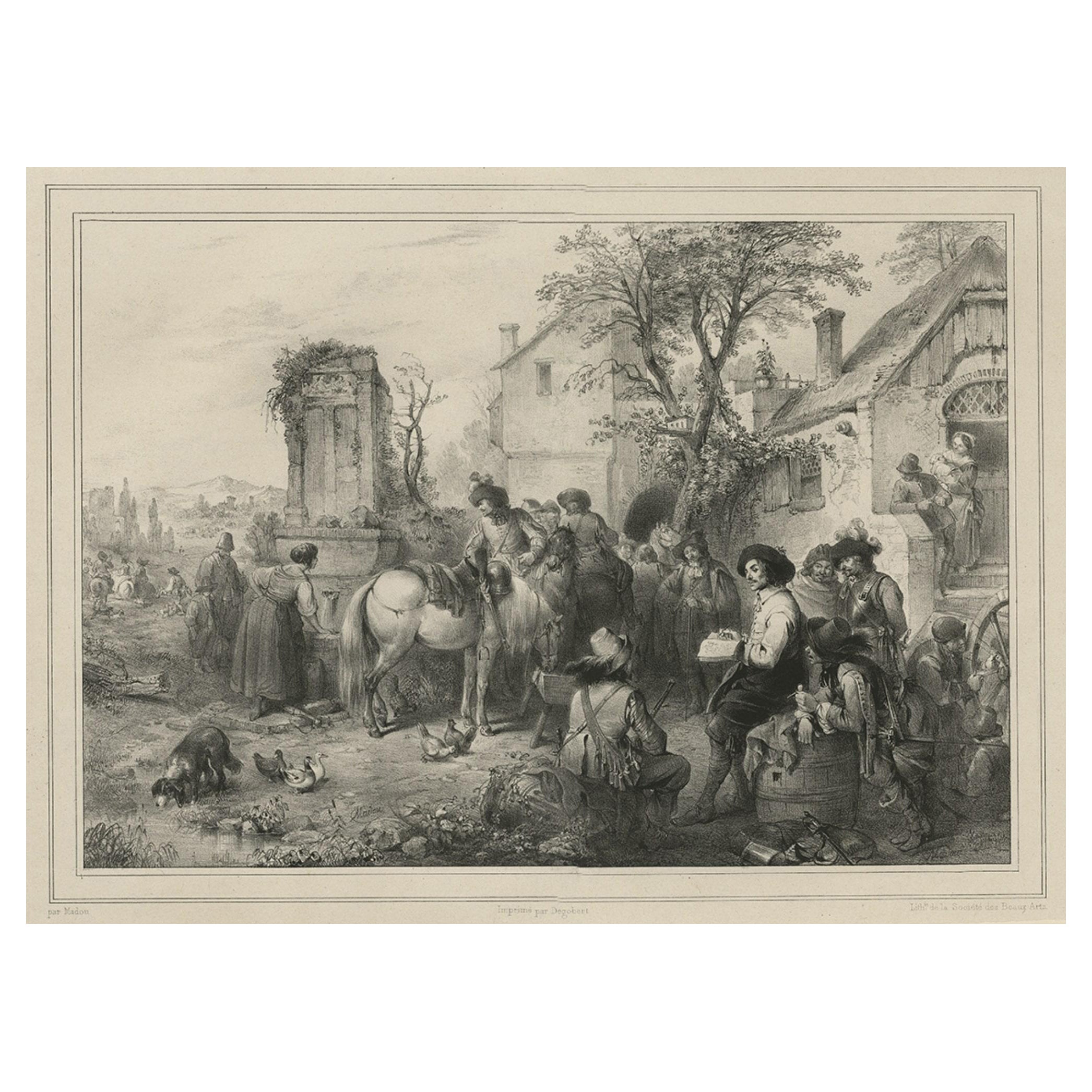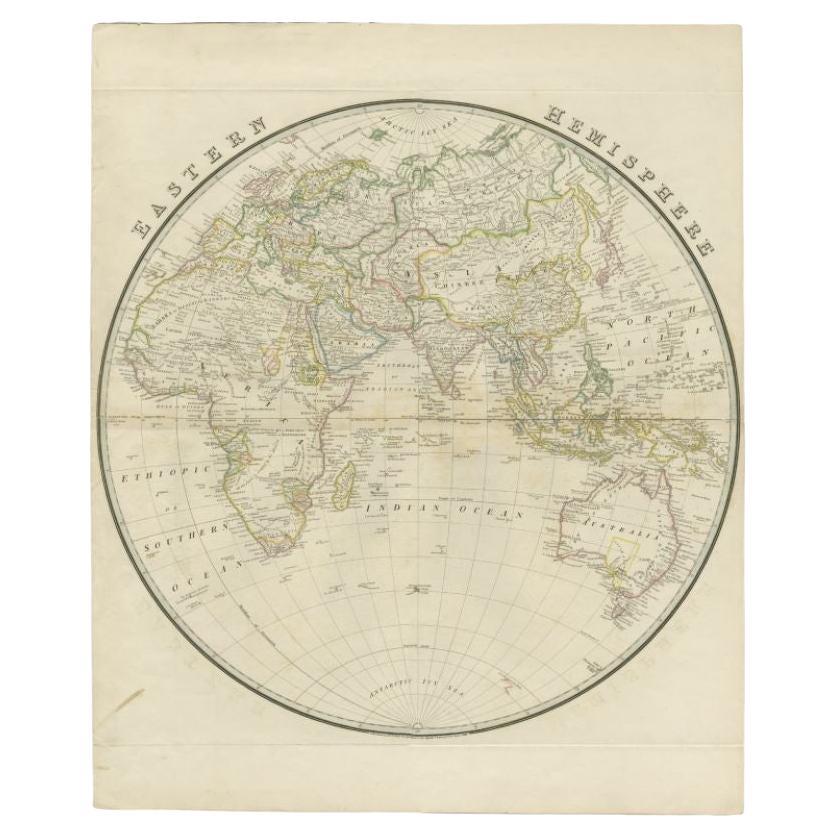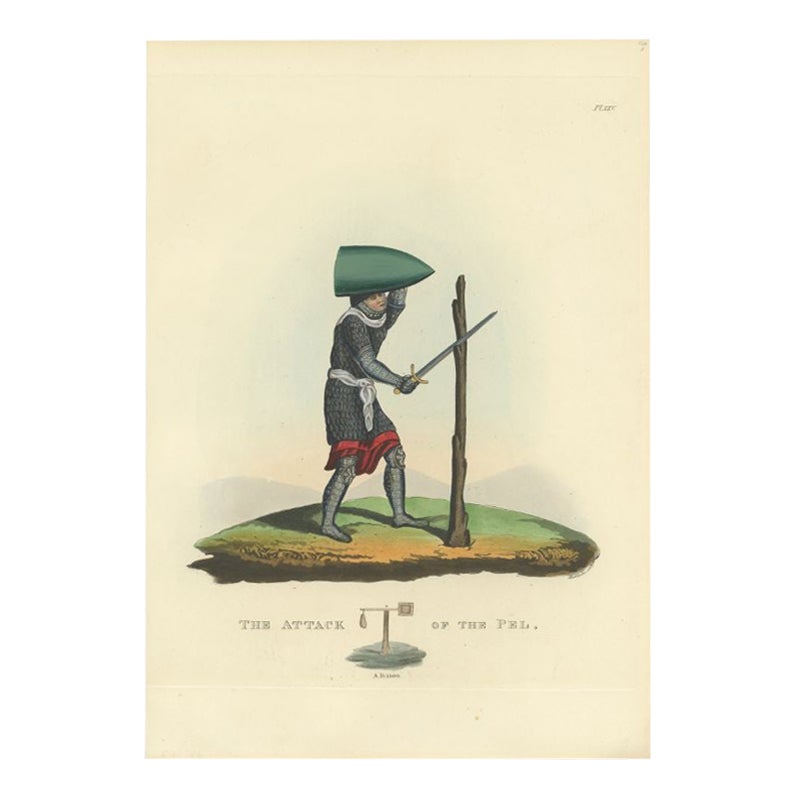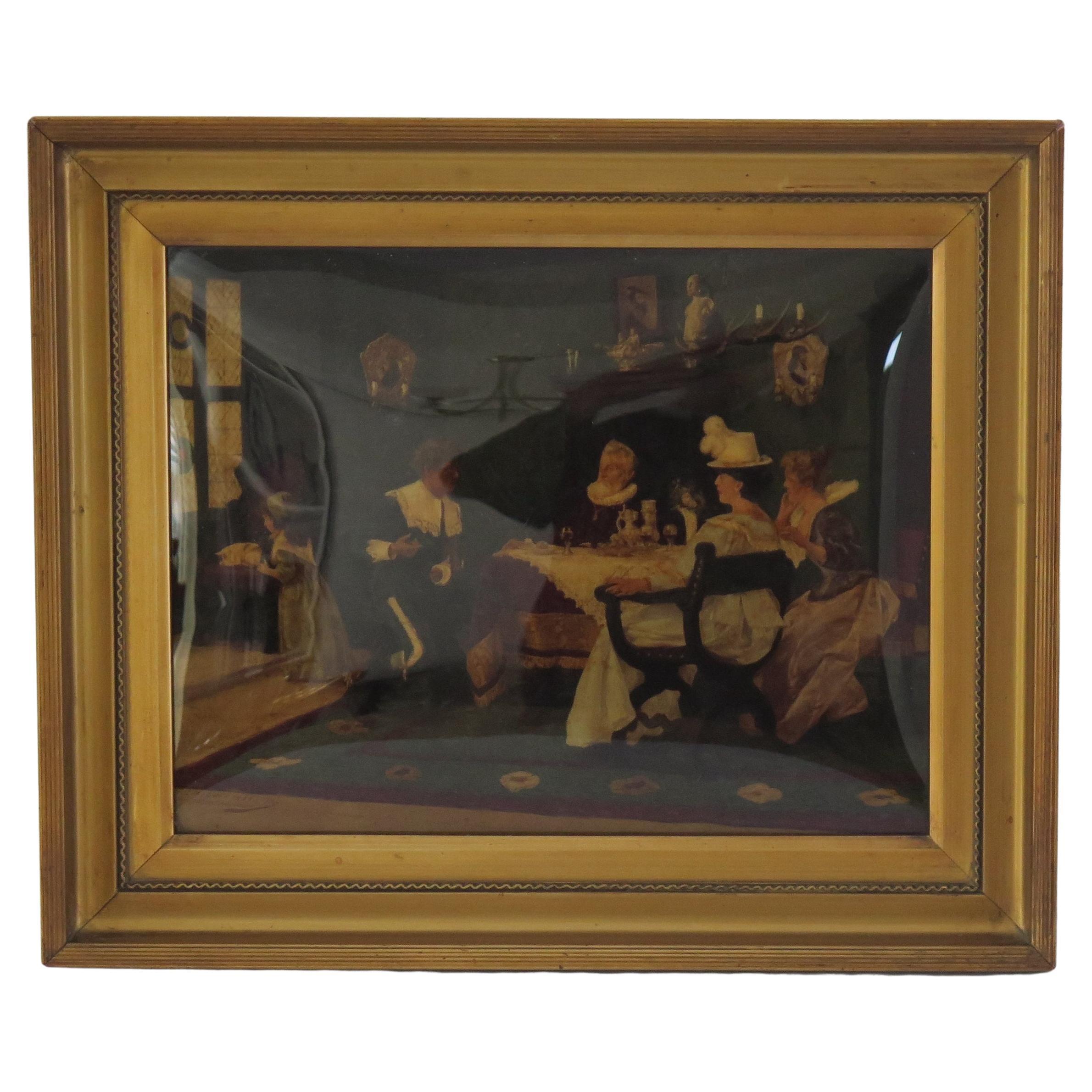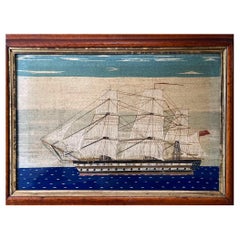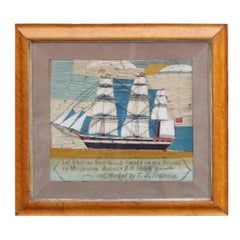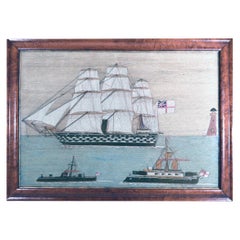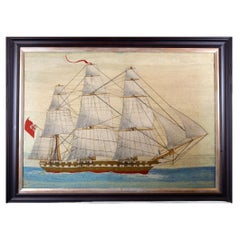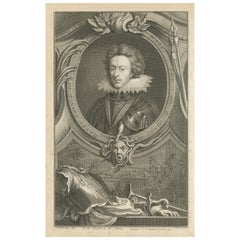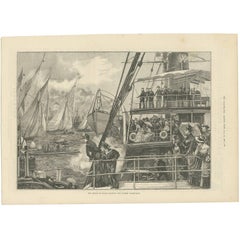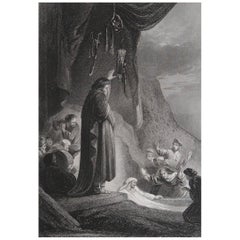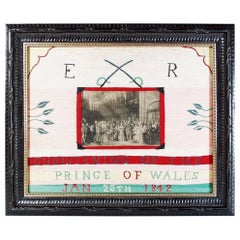
Christening of the Prince of Wales Woolwork Picture, Dated 1842
View Similar Items
Want more images or videos?
Request additional images or videos from the seller
1 of 8
Christening of the Prince of Wales Woolwork Picture, Dated 1842
$950List Price
About the Item
- Dimensions:Height: 16 in (40.64 cm)Width: 19.5 in (49.53 cm)Depth: 1.5 in (3.81 cm)
- Style:Folk Art (Of the Period)
- Materials and Techniques:
- Place of Origin:
- Period:
- Date of Manufacture:1842
- Condition:Wear consistent with age and use.
- Seller Location:Downingtown, PA
- Reference Number:Seller: ny50881stDibs: LU861010340571
About the Seller
5.0
Recognized Seller
These prestigious sellers are industry leaders and represent the highest echelon for item quality and design.
Platinum Seller
Premium sellers with a 4.7+ rating and 24-hour response times
Established in 1916
1stDibs seller since 2009
414 sales on 1stDibs
Typical response time: 1 hour
Associations
The Art and Antique Dealers League of AmericaAntiques Associations Members
Authenticity Guarantee
In the unlikely event there’s an issue with an item’s authenticity, contact us within 1 year for a full refund. DetailsMoney-Back Guarantee
If your item is not as described, is damaged in transit, or does not arrive, contact us within 7 days for a full refund. Details24-Hour Cancellation
You have a 24-hour grace period in which to reconsider your purchase, with no questions asked.Vetted Professional Sellers
Our world-class sellers must adhere to strict standards for service and quality, maintaining the integrity of our listings.Price-Match Guarantee
If you find that a seller listed the same item for a lower price elsewhere, we’ll match it.Trusted Global Delivery
Our best-in-class carrier network provides specialized shipping options worldwide, including custom delivery.More From This Seller
View AllBritish Sailor's Large Woolwork of HMS Brunswick
Located in Downingtown, PA
British Sailor's large woolwork of HMS Brunswick,
Made by J. H. Miller, Brixton,
Circa 1865
The large-scale sailor's woolwork depicts an image of a Royal Navy Second Rate Battleship...
Category
Antique Mid-19th Century English Folk Art Decorative Art
Materials
Wool
Sailor's Woolwork of The British Ship Gold Finder on her voyage to Australia
Located in Downingtown, PA
Sailor's Woolwork Nautical Picture,
Inscribed:The British Ship Gold Finder on her voyage to Melbourn, August 2, 1864. Worked by T.J. Francis,
Circa 1864
This sailor's woolwork depicts aportside view of the the Gold Finder. The Gold Finder was a 3-masted iron ship built in 1863 by J. Laing of Sunderland. There is a detailed inscription below including the maker's name- T.J. Francis.
A notice in the Liverpool Mercury on Tuesday May 3, 1853......This ship is expected to sail very fast, has all her passenger arrangements on a novel and peculiar plan, affording an amount of light and ventilation such as no other passenger ship ever possessed. The ships bell has recently been acquired by the Merseyside Maritime Museum. It seems though that the ship's description involved a degree of hyperbole as she was in fact laid down as a coal ship and converted to passenger accommodation later to meet the demand for the Gold Rush in Australia.
Dimensions: Framed: 28 3/10 inches high x 31 inches wide (72cm x 79 cm).
The Australian gold rush started after Edward Hargraves found the precious metal in New South Wales in 1851. He was not the first to discover gold but is credited with launching the stampede when thousands tried their luck at unearthing wealth - and some succeeded. Hargraves (1816-1891), a former hotelier and cattle farmer, played a small part in the California gold rush of 1849. He didn't get rich but met people who knew about gold and where it could be found - they pointed out similarities between California and New South Wales. Hargraves headed back to Australia to test these theories and stake a claim for a Government reward for the discovery of viable gold fields. Despite initial setbacks, he organised fellow prospectors in the quest for gold which was successful. Hargraves was granted massive rewards of more than pounds 12,000 and later a pension of pounds 250 a year.
He was born in Gosport, Hampshire, the son of an army officer, and educated at Lewes and Brighton Grammar School. Hargraves joined the merchant navy before arriving at Sydney in 1832 and marrying Eliza Mackie four years later.
Publicity about the gold rush prompted many migrants to sail from Liverpool to seek their fortunes - the first licence was issued in Victoria on 21 September 1851. Australia's population boomed as the emigrants...
Category
Antique Mid-19th Century English Folk Art Decorative Art
Materials
Wool
British Sailor's Woolwork of Three Royal Navy Ships, Circa 1885
Located in Downingtown, PA
British sailor's woolwork of three royal navy ships
Circa 1885
The British sailor woolwork depicts an unusual scene of three different types of Royal Navy Ships which are all flying the White...
Category
Antique 1880s English Folk Art Nautical Objects
Materials
Wool
British Sailor's Large Woolwork of a Royal Navy Ship Under Full Sail
Located in Downingtown, PA
British Sailor's large woolwork of a royal navy ship under full sail,
circa 1875
The sailor's woolie or woolwork depicts a starboard ...
Category
Antique Mid-19th Century English Folk Art Decorative Art
Materials
Wool
Sailor's Woolwork of Royal Navy Five-Masted Ship under Steam, Minotaur Class
Located in Downingtown, PA
Sailor's Woolwork of Royal Navy Five-masted Ship under Steam,
HMS Minotaur or HMS Agincourt,
Minotaur Class Broadside Ironclad,
circa 1880
The sailor's woolie depicts a portsi...
Category
Antique Late 19th Century English Folk Art Nautical Objects
Materials
Wool
American Applique Picture of a Basket of Strawberries
Located in Downingtown, PA
American oval shadow box felt picture depicts strawberries in an openwork straw basket with the large long handle rising above. Within an oval gilt frame...
Category
Antique Mid-19th Century American Folk Art Decorative Art
Materials
Felt
You May Also Like
Antique Portrait of Henry Frederick, Prince of Wales
By Jacobus Houbraken
Located in Langweer, NL
Antique portrait titled 'Henry Prince of Wales Son of K. James I'. Henry Frederick, Prince of Wales KG (19 February 1594 – 6 November 1612), was the eldest son and heir apparent of James VI...
Category
Antique Mid-18th Century Prints
Materials
Paper
$365 Sale Price
20% Off
Antique Print of the Prince of Wales Starting the Jubilee Yacht-Race, 1887
Located in Langweer, NL
Antique print titled 'The Prince of Wales starting the Jubilee Yacht-Race'. This print originates from The Illustrated London News June 25, 1887.
Category
Antique Late 19th Century Prints
Materials
Paper
$105 Sale Price
20% Off
A 19th Century Woolwork Picture of Floral Bouquet
Located in London, GB
England, circa 1880
A late nineteenth century English wool work picture, showing a cornucopia of flowers in a vase, the decoration applied and raised, with fine embroidery throughou...
Category
Antique 19th Century English Decorative Art
Materials
Wool, Giltwood
Original Antique Print After Rembrandt, the Raising of Lazarus, Dated 1842
By Rembrandt van Rijn
Located in St Annes, Lancashire
Wonderful image after Rembrandt
Fine Steel engraving.
Published by Fisher, London, Dated 1842
Unframed.
Category
Antique 1840s English Baroque Prints
Materials
Paper
Rare Antique Print of the Icelandic Horse, 1842
Located in Langweer, NL
The antique print titled 'Mammiferes Plate 11 - Cheval d'Islande (Equus caballus Islandicus)' is a rare depiction showcasing the Icelandic Horse. This ...
Category
Antique 1840s Prints
Materials
Paper
$1,152 Sale Price
20% Off
Old Print of Wouwerman and the Study of Horses, 1842
Located in Langweer, NL
Antique print titled 'Ph. Wouwerman - Étude de Cheval (..)'.
Antique print depicting Ph. Wouwerman and the study of horses. This print originates...
Category
Antique 1840s Prints
Materials
Paper
$422 Sale Price
20% Off
Recently Viewed
View AllMore Ways To Browse
Sister Kent
Kitchen Wall Art
Japanese Wood Wall Art
Large Decorative Wall Plates
Large Ceramic Wall Art
Glass Mosaic Wall Art
Italian Wall Tiles
Large Japanese Wall Art
Italian Wall Plaque
Mid Century Ceramic Wall Plate
Hanging Ceramic Wall Art
Large Vintage Wooden Wall Art
Mid Century Modern Fish Wall
Irish Antique Decorations
Japanese Wall Fabric
Mid Century Wall Art Horses
Mid Century Modern Wall Art Tile
Majolica Wall Plate
